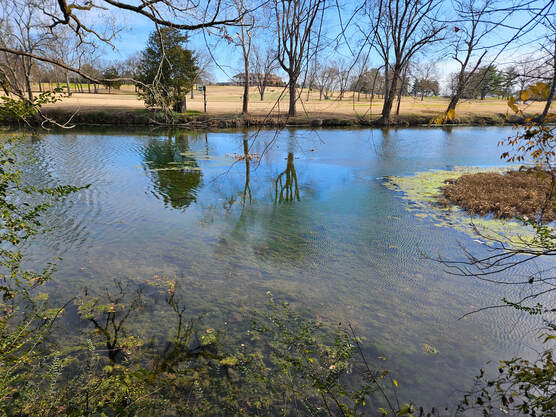
Walking the Stones River Greenway, just north of Broad Street, there is a small wooden overlook jutting out over the water. There was an interpretative sign there but recent repairs by the city had it removed. This peaceful spot on the river was everything but after nightfall on December 29, 1862 as the first gunshots rang out the grounds of the Battle of Stones River.
After marching for four days from Nashville pushing back the Confederate troops, Major General Thomas Crittenden left wing was the first unit to reach the outskirts of Murfreesboro. Scouting reports indicated that the Confederate forces had moved back to defend the town. With this information, Crittenden had orders to cross the river and take position on the other side.
They chose a natural ford in the river taking advantage of the shallow water. Colonel Abel Streight led his 51st Indiana Regiment, part of Colonel Charles Harker’s Brigade, into the icy water. Led by Companies A and F, they got half way across when Confederate guards positioned across the river fired on them. Captain Milton Russell ordered his troops to double time their run to take advantage of the time needed by the Confederates to reload their rifles. This action allowed them to reach the other shore safely.
The victory was very brief. After the entire brigade of Col. Harker reached the other bank of the river, Russell immediately noticed a large force of Confederate troops moving towards them. The scouting reports were false as the Confederates had gathered a large force on Wayne’s Hill within sight of the river. Russell quickly ran back across the river to deliver the news to Streight who got Crittenden to stop the Left Wing’s advance across the river. The Union withdrew back to the safety of the west side of the river.
Captain Milton Russell was eventually awarded the Medal of Honor at the Battle of Stones River for his actions saving the entire Left Wing. This was the first of eleven medals awarded to Union troops for bravery during the battle.
The river ford became known as Harker’s Crossing. Although it was his brigade, the real heroes were Russell, Streight and the 51st Indiana. The interpretative sign on the overlook will be replaced to tell the story of December 29, 1862. In the meantime, the overlook becomes a great location to view not only the river but Wayne’s Hill at the Stones River Country Club across the river.
After marching for four days from Nashville pushing back the Confederate troops, Major General Thomas Crittenden left wing was the first unit to reach the outskirts of Murfreesboro. Scouting reports indicated that the Confederate forces had moved back to defend the town. With this information, Crittenden had orders to cross the river and take position on the other side.
They chose a natural ford in the river taking advantage of the shallow water. Colonel Abel Streight led his 51st Indiana Regiment, part of Colonel Charles Harker’s Brigade, into the icy water. Led by Companies A and F, they got half way across when Confederate guards positioned across the river fired on them. Captain Milton Russell ordered his troops to double time their run to take advantage of the time needed by the Confederates to reload their rifles. This action allowed them to reach the other shore safely.
The victory was very brief. After the entire brigade of Col. Harker reached the other bank of the river, Russell immediately noticed a large force of Confederate troops moving towards them. The scouting reports were false as the Confederates had gathered a large force on Wayne’s Hill within sight of the river. Russell quickly ran back across the river to deliver the news to Streight who got Crittenden to stop the Left Wing’s advance across the river. The Union withdrew back to the safety of the west side of the river.
Captain Milton Russell was eventually awarded the Medal of Honor at the Battle of Stones River for his actions saving the entire Left Wing. This was the first of eleven medals awarded to Union troops for bravery during the battle.
The river ford became known as Harker’s Crossing. Although it was his brigade, the real heroes were Russell, Streight and the 51st Indiana. The interpretative sign on the overlook will be replaced to tell the story of December 29, 1862. In the meantime, the overlook becomes a great location to view not only the river but Wayne’s Hill at the Stones River Country Club across the river.
